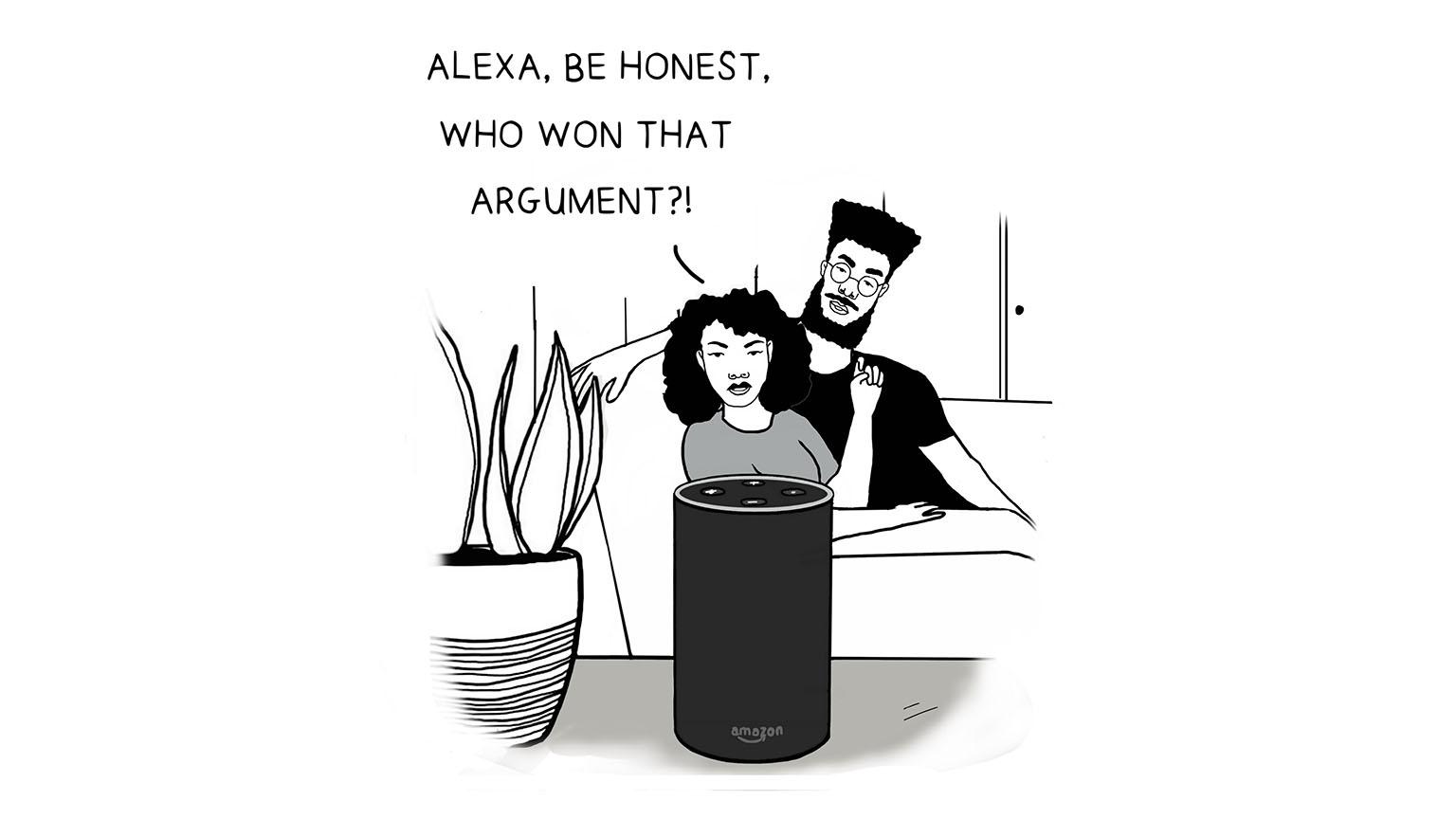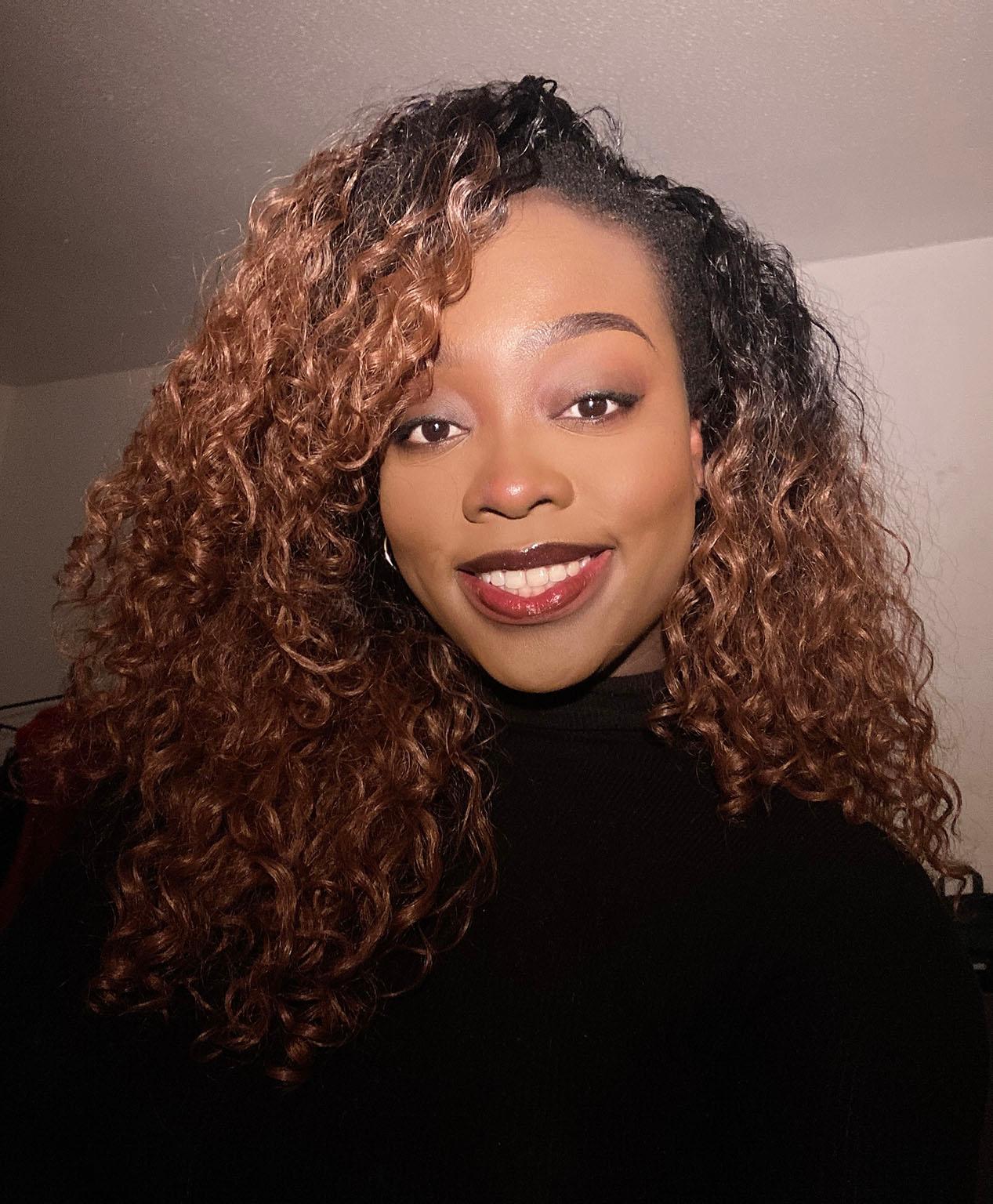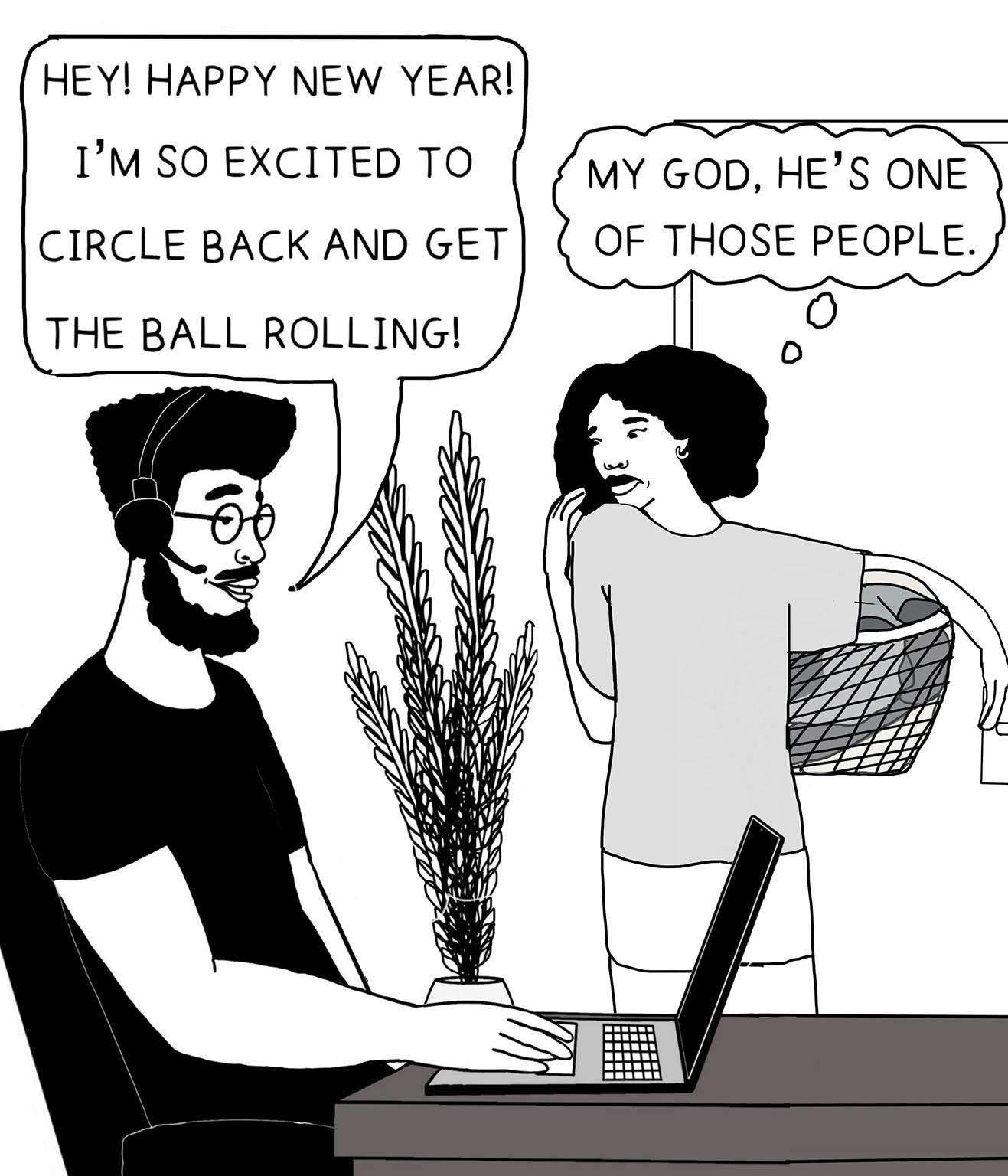Sarah Akinterinwa: ‘I show people that everyday life is really quite funny’

Sarah Akinterinwa talks about her career-launching comic series, representation and the links between her work and that of 18th-century caricaturist Mary Darly.
A version of this article first appeared in the summer 2022 issue of Art Quarterly, the magazine of Art Fund.
Who is Sarah Akinterinwa?
After Sarah Akinterinwa’s comic, Oyin and Kojo, about a fictional Black British couple, was spotted on Instagram by an editor from The New Yorker, from not having had her drawings published before, the 27-year-old Nigerian-British artist became a contributor to the magazine famed worldwide for its cartoons. Commissions from the Los Angeles Times, The Guardian and the Wellcome Collection followed. Now her cartoons are to be exhibited at London’s Cartoon Museum in dialogue with works by 18th-century British artist and caricaturist Mary Darly, whose work has been under-recognised compared to her male contemporaries, which included her husband Matthew Darly.

Q. How do you use your cartoons to narrate aspects of everyday life?
During the Covid lockdown I was made redundant and dumped by my boyfriend, so I needed a distraction. I decided to start drawing Oyin and Kojo because there were no cartoons about Black British people. They’re meant to reflect the reality of our demographic: Black British millennials, who can’t afford to have kids right now and are flat-sharing. Most of the cartoons were about this couple surviving Covid, being in lockdown, being sick of working from home and frustrated with their employers. The theme of my work is that we’re all experiencing similar things behind closed doors – mundane things, essentially.
I make sure I tell the truth as much as I can. Cartooning is usually meant to be comedic. I lean into that and show people that everyday life is really quite funny. My family and siblings inspire a lot of my humour. We’re always laughing about something. My parents are both immigrants from Nigeria. Oyin is a Nigerian name meaning ‘sweetness’ in Yoruba and Kojo is a Ghanaian name. I thought it was realistic to have a Black British couple from different backgrounds.
As a child, I loved to draw comics. I didn’t see that as comic art because there are very few things little Black girls are allowed to do and be
Kojo is passive, serious, introverted and awkward. He’s a tall Black man, which, stereotypically, people think of as cool and scary but, actually, he’s quite nerdy and passive. I wanted to present the diversity of Black male personalities. Oyin is spunky, silly, sarcastic and funny; she says what’s on her mind and does what she wants. Characters work well when they have opposite personalities. I was surprised that so many people loved this fictional cartoon couple and could relate to them.
As a child, I loved to draw comics. I didn’t see that as comic art because there are very few things little Black girls are allowed to do and be. I couldn’t label myself as a comic artist, and to this day it still feels strange because there are very few Black women cartoonists. The reason is probably the lack of representation. Children and young people need to look to someone to say, ‘Maybe I’ll be like her one day.’ I’ve definitely felt overlooked and ignored, and I worked hard to approach newspapers because I would love to see people of colour represented. They just didn’t see a need for it.
It’s really exciting that the Cartoon Museum will do a comparison of my work with Mary Darly’s. Although it’s very different to what I do, and reflective of her time, I relate to her. Comparing her to me, a young Black woman cartoonist, is going to be really interesting, because it will get people thinking: ‘Why don’t we have more women cartoonists? Why is cartooning so significant to politics and to how we think?’ I can’t wait to see it all happen.

Mary’s work feels quite abstract, whereas I try to make mine more realistic. She uses drawing techniques that are very fine arts, and they don’t look as fun and bubbly as cartoons today. It can be hard to see the comedy, but I guess ideas of playfulness have changed. With the Wellcome Collection, I’m doing a weekly comic called Body Equality, related to people who experience inequality – for instance, through female gynaecological health, fat phobia or disability. We don’t really get an opportunity, as people of colour and people with marginalised bodies, to tell our stories in any creative way. The stories are meant to be humorous, or educational and thought-provoking. One of my goals is to uplift others. It’s available to see on Wellcome’s website and on its social-media pages.
I didn’t have any training; I just always drew. I was very lucky. I was this girl living in a council estate in Gravesend, Kent. I’m now a New Yorker magazine cartoonist. It’s changed my life, basically. I hope if more people see Oyin and Kojo they’ll feel inspired. And it just goes to show that miracles are real.
‘Sarah Akinterinwa x Mary Darly: A Dialogue’, Cartoon Museum, London, 14 July to 30 October 2022. Free with National Art Pass.